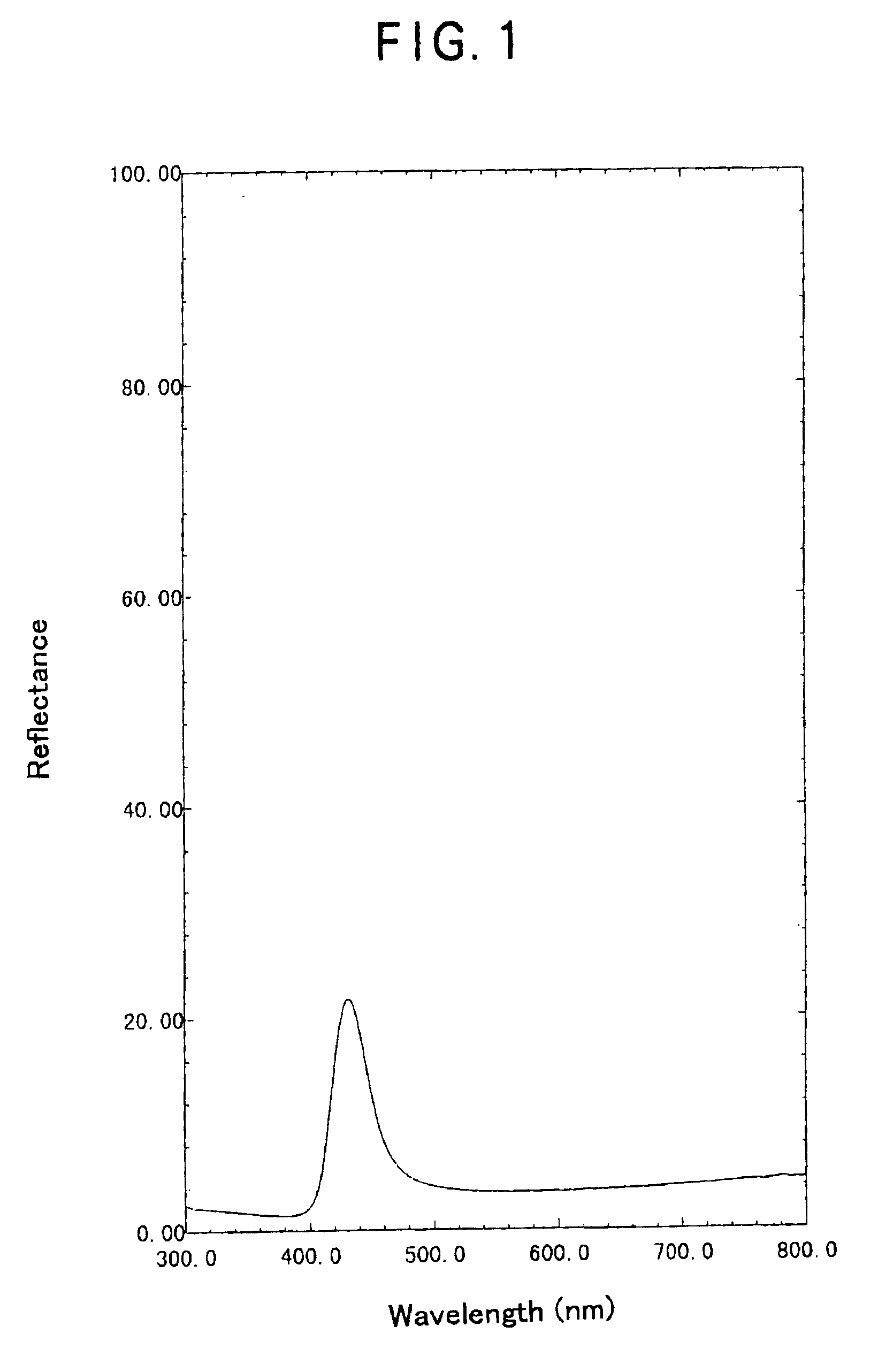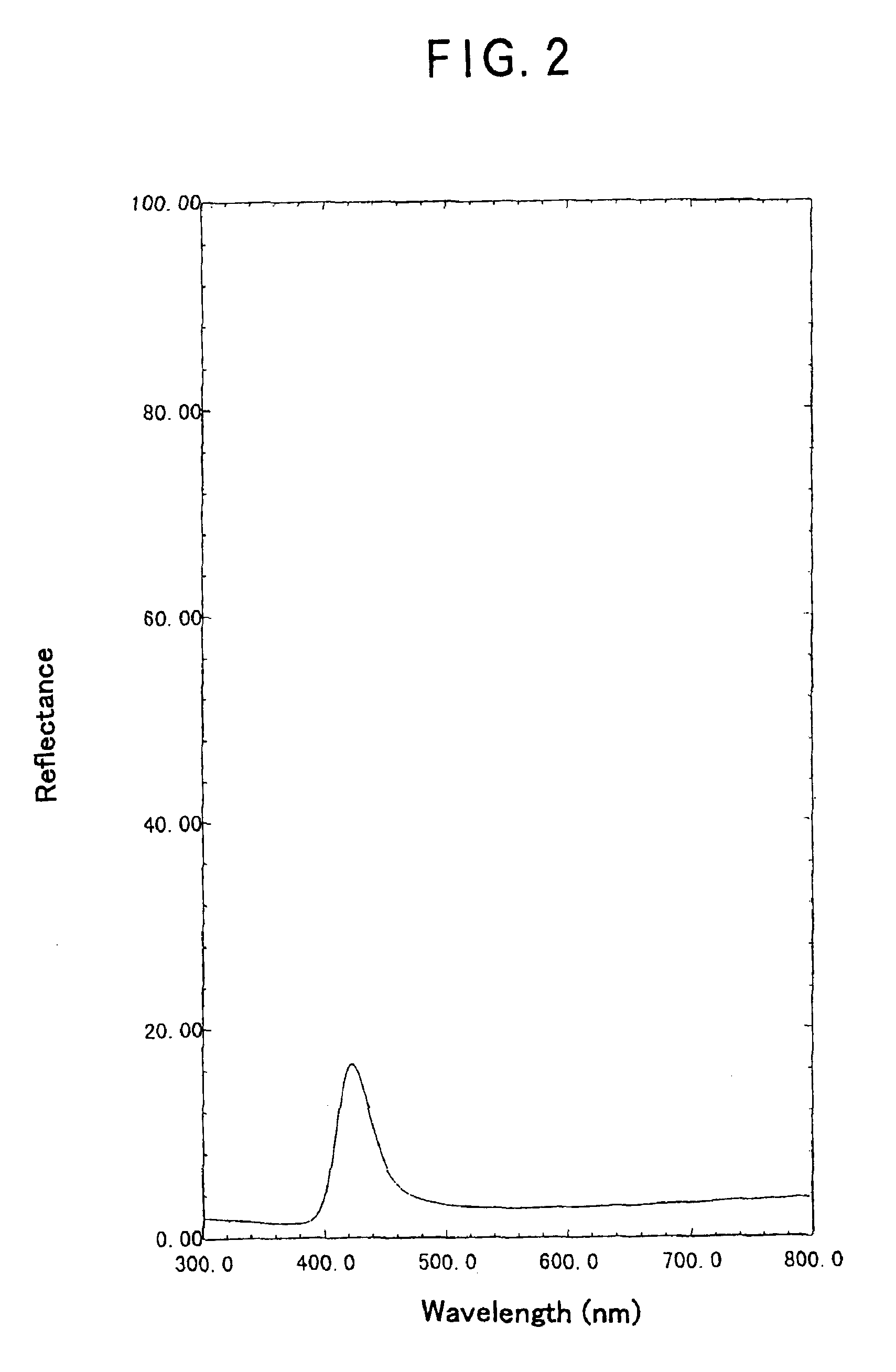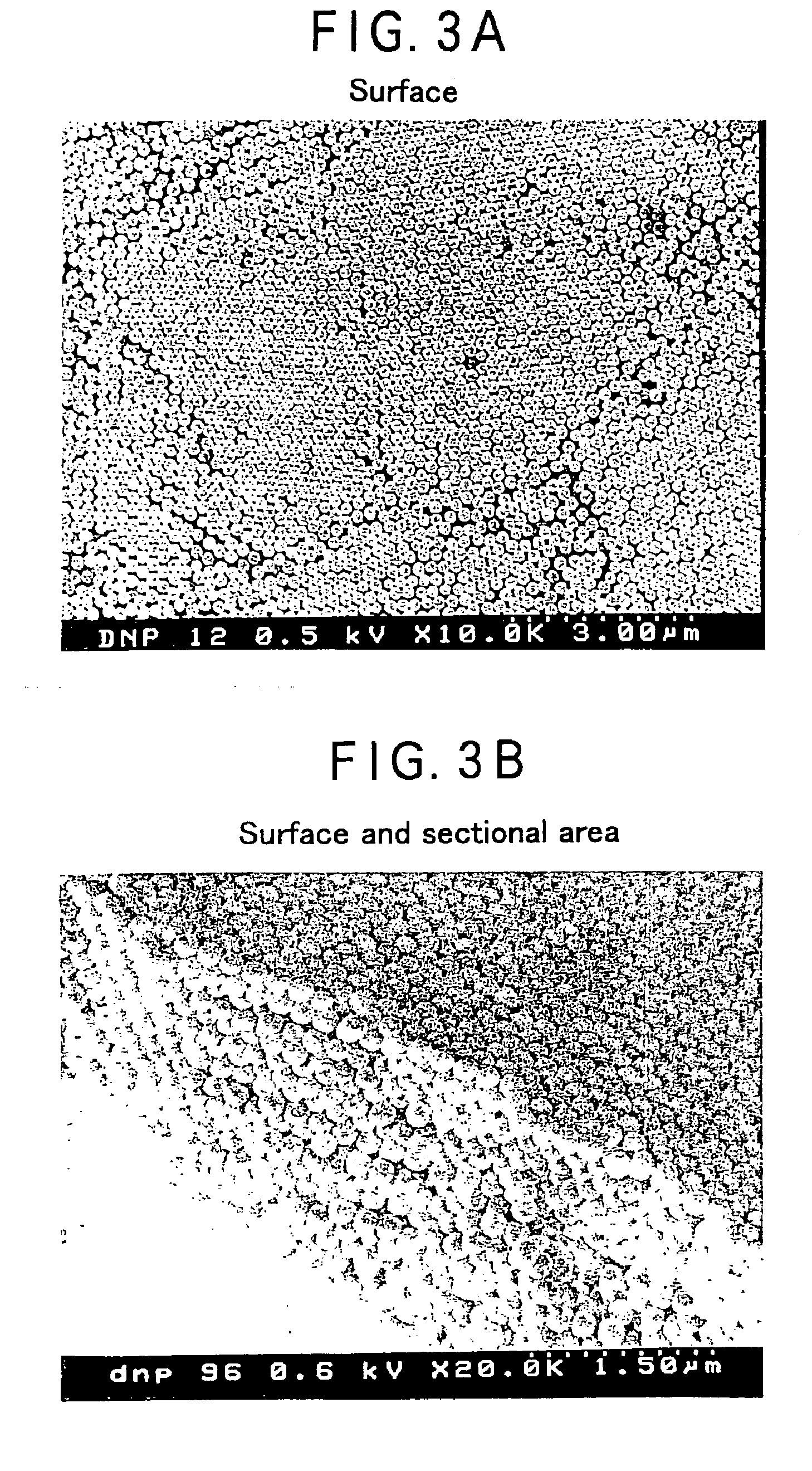Method for producing polymer-particle composites
a technology of composites and polymer particles, applied in the direction of diffusing elements, optical elements, instruments, etc., can solve the problems of inability to control the thickness of films, long production time, and requirement of cell or sealing
- Summary
- Abstract
- Description
- Claims
- Application Information
AI Technical Summary
Benefits of technology
Problems solved by technology
Method used
Image
Examples
example 1
[0119]A glass substrate was spin-coated with a 5% by weight aqueous solution of polydiallyldimethylammonium chloride (Aldrich). After drying at 80° C. for 30 minutes, this coated glass substrate was immersed in a colloidal silica suspension whose particle size was 180 nm (SiO2 concentration: 40% by weight, Nissan Chemical Industries, Ltd) to obtain a silica particle-polydiallyldimethylammonium chloride composite film within several seconds. A part of the polymeric diallyldimehylammonium chloride was considered to undergo a counter ion exchange with —O−Na+on the surface of the silica particle whereby forming an ionic bond, as shown below.
[0120]The reflection spectrum (incidence: 5°) of the silica particle-polydiallyldimethylammonium chloride composite after drying for a day at room temperature is shown in FIG. 1. A peak indicating that the silica particle was packed in the composite film periodically (peak wavelength: 431.5 nm) was observed clearly.
example 2
[0121]A polymer-particle composite obtained similarly to Example 1 was sintered at 750° C. for 3 hours to obtain a sintered silica particle. This sintered particle had the reflection spectrum (incidence: 50) shown in FIG. 2. A peak indicating that the silica particle was packed periodically (peak wavelength: 422.5 nm) also in the sintered composite was observed clearly. FIG. 3 shows a scanning electron microscopic photograph illustrating the surface and the sectional area of the sintered particle. It reveals that the particle was packed periodically on the surface and the sectional area.
example 3
[0122]A polymer-particle composite obtained similarly to Example 1 was sandwiched, as still being soaked with water without drying, between two glass substrates, the circumference of which was sealed to obtain a sealed material (artificial opal) which reflected a visible light like a naturally-occurring opal. This phenomenon indicated that a colloidal crystal was formed in this polymer-particle composite. FIGS. 4, 5 and 6 show the reflection spectra (FIG. 4: incidence: 5°, peak wavelength:540.5 nm, FIG. 5: incidence: 45°, peak wavelength:473.0 nm) and the transmission spectrum (FIG. 6: incidence: 0°, peak wavelength:538.0 nm) of this sealed material. Each figure revealed that the silica particle was packed periodically.
PUM
| Property | Measurement | Unit |
|---|---|---|
| Percent by mass | aaaaa | aaaaa |
| Length | aaaaa | aaaaa |
| Length | aaaaa | aaaaa |
Abstract
Description
Claims
Application Information
 Login to View More
Login to View More - R&D
- Intellectual Property
- Life Sciences
- Materials
- Tech Scout
- Unparalleled Data Quality
- Higher Quality Content
- 60% Fewer Hallucinations
Browse by: Latest US Patents, China's latest patents, Technical Efficacy Thesaurus, Application Domain, Technology Topic, Popular Technical Reports.
© 2025 PatSnap. All rights reserved.Legal|Privacy policy|Modern Slavery Act Transparency Statement|Sitemap|About US| Contact US: help@patsnap.com



